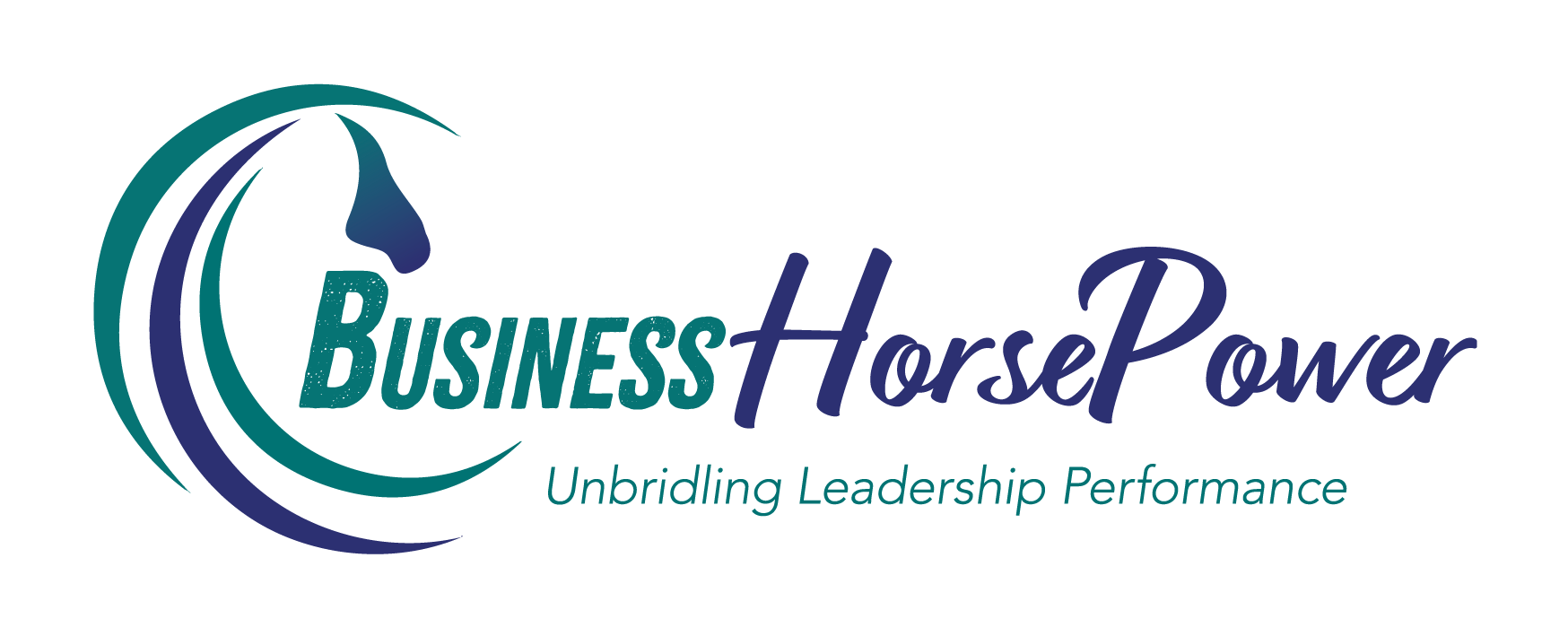
by Julia Felton | Aug 15, 2018
The bi-ennial Farnborough Airshow is one of the largest aerospace shows in the world. During the 2016 show USD124 billion of orders and commitments were placed, so this is clearly a big deal for the aerospace industry and a time during the year when they make considerable sales that drive their revenue and profits.
For the 1,500 exhibitors creating a great experience for their potential prospects is paramount if they are to secure the business, which is why so many of the major suppliers like Boeing and Lockheed Martin invest tens of thousands of pounds in corporate hospitality.
Why do they do this? A unique corporate hospitality suite enables the company to wine and dine their prospects in a luxurious environment. It provides a sanctuary for meetings away from the hustle and bustle of the show where trust and rapport can be built up. The environment relaxes the prospect and so hopefully makes them more inclined to buy.
But the aerospace company can only do so much. A key partner in their success during the show are the hospitality companies that provide catering for them during the event. If the catering company doesn’t perform, it reflects on the company, and poor service and/or a bad experience could result in the company losing the potential order.
So it was with some trepidation that I agreed to run the corporate hospitality chalet for one of the major players. Our three-story chalet stood on a prize spot on the airfield with a magnificent view of all the aircraft landing and taking off for their demonstrations. We had two restaurants in the chalet, along with a bar and an external viewing platform.
My challenge was how to develop a high performance team from 24 individuals who had not met each other before and had never worked at this venue before. And I had to do this all within 24 hours. We often read that it takes many months to create a high performance team and maybe that is true if the team has to work together day in, day out for many months. Here rather I needed to establish a high performance team within 24 hours that could provide exemplary service for six days and then be disbanded – probably never to work together again.
These are the 7 lessons I learned in creating that team:
1) Share The Leadership
Within our chalet we split the leadership down between three of us. The chef took responsibility for the kitchen area, and myself and a colleague, Sarah, took a restaurant each, so effectively each of us was responsible for a floor of the unit. This also meant that each of us was managing a small team of between 8-10 people
2) Clearly Define Job Roles
Each of us took responsibility for certain roles within the chalet. The chef took responsibility for all food delivery and ordering food supplies. Sarah looked after breakfast service, the a la carte lunch service and afternoon champagne and canapé service. I took responsibility for the bistro buffet and bar and the conference rooms. Then within each team we allocated different roles to different team members. The key here was quickly identifying the skill set of the team members, as well as asking them what they wanted to do, and then making a judgement on the best role they could perform in the team.
3) Explain the Purpose of The Role
Since all of my team members were millennials I knew I needed to provide some context and purpose for them on what we were doing and why. Spending time helping them understand more about the air show and the massive importance that this event had to the client was instrumental in getting their buy in. After all as I reasoned with them, people buy with emotions and then justify with logic, so if we could help create an amazing experience for our clients prospects there was a great chance they would buy which in turn would make our client very happy
4) Pay Attention
Observing and paying attention to what my team were doing was a key role of mine as well as providing them with continual feedback on how they were doing. Once the team members knew I was noticing and caring about how they performed, they pushed themselves harder to improve even more.
5) Say Thank You
Keeping team members feeling appreciated for what they were doing was key because being fairly recognised for great performance makes it worth the effort. Typically this was just acknowledging a job well done, especially when given the sweltering weather conditions some of the activities had to take place in sauna like conditions. With many of the days stretching into 14 hours keeping morale up by being appreciative was critical.
6) Keep Asking For Feedback and Suggestions
Never assume you have all the answers. Daily check-ins with the team where we evaluated what we had done well the previous day and what we could do better yielded great ideas, many of which we were able to implement immediately. The result was that the team members felt they were contributing and able to influence events, whilst for the client it ensured they got even better service.
7) Model The Way – Lose the Ego
Demonstrate the standards you expect by the way you behave. Sometimes that meant I was washing up and taking out trash. When team members see that you don’t see an activity is above you, it immediately brings them on side and more likely to engage in that less than desirable task.
In part due to the great service and support that the team provided our client for the air show had a bumper year of sales and was delighted with the experience we created for them. Our success came from truly understanding that each of us had a role to play and that all of our roles synergistically worked together to create the whole. Everyone’s success was interdependent on someone else – just like in nature – and so when we all aligned with the same focus then amazing results were achieved in a really short period of time.
So are you using these high performance strategies in your business?. Even if you don’t employ team members you can use these strategies to engage your suppliers and customers.

by Julia Felton | Aug 4, 2018
The summer months can signal the death knell for a business unless managed properly. As leaders and business owners, we all know that it is important for us and our team members to have balanced life; but have you ever stopped to consider how the summer months can literally kill the momentum in your business?
Think about an aircraft. It uses a large proportion of its fuel to simply get off the ground. Once airborne, only a tiny amount of energy is then required to keep it flying. And it’s the same in your business, too.
Projects take time, energy and resources to get going, and then when you think everything is going swimmingly, summer kicks in — and unless managed carefully, the momentum can be lost.
It’s a bit like the plane crashing en-route to its destination. The results can be devastating because, not only is productivity lost during these summer months, but the impact lasts into the third quarter of the year — meaning that close to six months of the year can be impacted by the loss of momentum during the summer.
If you don’t believe me, then let’s look at the research by American Express that reveals during the summer months there is:
- 20% decline in workplace productivity
- 19% drop in employee attendance
- 13% increase in the time it takes to complete projects
- 2.6 times increase in the time taken for lunch
And if that wasn’t bad enough, the research also revealed that there is a:
- 200% increase in shopping during work hours
- 120% increase in employees searching for another job
Which is why the summer months can have such a negative impact on overall business performance, unless managed appropriately.
Here are five things leaders can do to help maintain momentum during the summer months
1. Schedule Employee Vacation In Advance
Make sure you get everyone’s vacation days planned in advance. This way you can best minimize the impact on the business, and you will have clarity on what is happening. Plus, team members can support each other in managing workloads prior to going on their vacation.
2. Insist Employees Unplug When They Are on Vacation
It is essential that team members take vacation so they can recharge, and in today’s world it is important to ensure that your team members really do dis-connect and unplug from the business. Way too many people go on vacation but stay connected to the office by technology, meaning they never really switch off. To operate at high performance, employees need to rest and relax so they can replenish their energy sources. Ensure team members put out-of-office notifications on their emails so they don’t feel compelled to respond to email whilst they are away.
3. Create Focus By Having Clearly Defined Projects/Activities
Focus gives team members clarity and certainty, so make sure that the team has some fun goals to achieve over the summer. Maybe even consider setting some challenges for the team to keep them engaged, and give out prizes or incentives for those team members who complete the challenges.
4. Be Flexible With The Hours Worked
As a leader, we all know that it is not the hours worked that is important but rather the outputs delivered. Allowing team members to leave early, once certain milestones are met, will help keep the team focused and working at a high level. It will also encourage cooperation as the team pulls together to achieve the objectives, and everyone wins.
5. Model The Way
As a leader, your team looks to you to create a positive example for them. So model the way and set yourself higher goals for the summer. It’s often easier to get meetings during the summer because others are in the mentality of slowing down, so leverage this to your best advantage. Arrange meetings, attend events, and stay positive. Your team will see your drive and excitement and feed off this, thereby maintaining their own personal momentum.
Implement these five strategies if you want your business to grow over the summer; and remember, your momentum becomes your team’s momentum. So lead your team towards a productive summer.

by Julia Felton | Jul 31, 2018
Many traditional corporate organisations are struggling to adapt to the demands of the new world rapidly changing around them. They are clinging to the same ideas, talent management models, and ways of working with leaders who are either oblivious to the current mindset or too frightened to instigate change.
Research by the GC Index indicates that there are individuals who have the potential to initiate change and drive transformation, but they are rarely able to make their mark in the corporate world. They are often viewed as disruptive since they challenge the status quo. Exactly what is required for change? Within the GC Index, these individuals are called Game Changers.
Game-changing is different than innovation.
Innovators build on what has been done before — for example, the pursuit of excellence through continuous improvement and incremental change. It’s Game Changers who can trigger and drive transformational change; however, the reality is that many organisations are driving their vision through the need for innovation. Often this is delivered in quite a controlled way, by investing in innovation hubs, labs, processes, and programmes.
Game Changers have the potential to really motivate and inspire others, while displaying an incredible work ethic and dedication, but only when others understand them and what they can contribute. To thrive they need to be set free in a culture where it is “safe to fail.” Where leaders value game-changing ideas rather than innovation.
Unless understood, there are five ways that Change Makers can be seen to be disruptive in organisations.
1) Game Changers are driven by Hierarchy and Stifled by Rules
The stronger the Game Changer inclination, the more they will feel constrained by arbitrary rules and only conform to rules that make sense to them. Since Game Changers are not bothered about status or climbing the corporate ladder, it can be challenging for leaders to retain them within the traditional organisational structures.
2) Game Changers Alienate People
Naturally obsessive, Change Makers are often seen by others as being difficult. Tenacious and persistent, they are repeatedly challenging how things are done and seeking for ways to transform the future.
3) Game Changers See Things Differently
Game Changers are unafraid of failure because they seem to have an inherent belief in their ability to survive. They take on projects that others would view as risky, since their level of risk assessment is very different from many organisational norms. As a result they are often described as disruptive, yet ironically, they are the very people who can instigate change.
4) Game Changers Are Obsessive
When a Game Changer decides to do something, they do not give up on it. This obsessive compulsion can frustrate colleagues, especially when others feel they are driving through change just for the sake of it. For organisations to leverage the strength of Game Changers, they need to allow them a platform to share their ideas and then the freedom to fail. Only through failure will success ultimately ensue.
5) Game Changers See Round Corners
Game Changers always ask “why not” and are prepared to challenge the status quo. They don’t use the past to predict the future, but rather think laterally and very creatively. They don’t necessarily value the tried and tested, but rather seek out solutions that others would instantly believe not possible. Leaders need to be clear about the Game Changer’s talents and leverage these to best effect.
The GC Index research helps explain the irony that exists for Game Changers, as they often find it difficult to survive and thrive in traditional “controlling” corporate structures that don’t value creativity, and so the very organisations that they could help struggle to retain them or realise their full potential.
As one Game Changer noted:
“I lost heart and felt claustrophobic. . . . there was too much red tape, too many barriers and too many people ready to dismiss my ideas without listening to them.”
So if you’re a leader, I urge you to reflect on who the Game Changers are in your team. What can you do to support their success, and ultimately, that of the organisation?
Not sure who your Game Changers are, then why not take the Change Maker Assessment to discover what type of Change Maker you are. There are five by the way. Simply get in touch with me at julia@businesshorsepower.com.

by Julia Felton | Jun 24, 2018
“We can’t solve problems by using the same kind of thinking we used when we created them” – Albert Einstein
When was the last time you experienced true flow? This would have been when you were doing something you loved and time just flew by. You were acting from your strengths and doing something that you were TRUSTed in delivering. How would it be if you had a process to tap into your floe whenever you wanted? Then great, tread on as getting into a flow state does not need to be by accident.
In his book, The Rise of Superman, Steven Kotler, a super-expert on flow describes how elite athletes and extreme sport-people get into flow, and what we can learn from them. Stephen has teamed up with many of the leading action and adventure athletes along with top scientists to decipher what these athletes are doing to harness flow.
What does this mean to you and your business? How can flow improve your results? Steven calls flow “the source code for our intrinsic motivation” and he cites many studies from McKinsey to the US Army, that have found that people who harness their flow state can increase productivity and results by 200% to 500%”
As the McKinsey Quarterly states: “The opportunity cost….is enormous….Most report that they and their employees are in the zone at work less than 10% of the time. (But) if employees….are five times more productive in flow than they are on average, consider what even a modest 20-percentage-point increase in flow time would yield in the overall workplace productivity- it would almost double”.
Here are the four stages that Steven explains that we go through in order to get into flow:
Stage One – STRUGGLE
The first stage of the four stage flow cycle seems like the opposite of flow. This is when you’re working hard, pushing to train, research, brainstorm – when you’re overloading the brain with information until it feels like your head is about to explode. Most people never push past this first stage far enough, why is why they constantly miss the doorway to the flow experience.
Stage Two – RELAXATION
This is when you take your mind off the problem entirely, taking a break, going for a walk or doing something physical. Thsi isn’t the same as watching TV or some other distraction that keeps the brain busy. It’s about relaxing the brain so the conscious mind lets the subconscious mind take over. Many people miss this break and as a result are constantly in overload and burnout missing flow altogether.
Stage Three – FLOW
This is the superman experience when inspiration takes over and where your preparation and relaxing express themselves almost magically. You come up with the best ideas, you achieve results almost effortlessly, and you often surprise yourself by your own performance. It’s almost an out-of-body experience whether it’s a mastery of a physical, emotions or mental activity.
Stage Four – CONSOLIDATION
The final stage is where learning and memory is amplified dramatically, consolidating the experience of flow into your unconscious. There’s also a downside, where you come off the high of the feel-good neuro-chemicals released during the flow state. You go on a down which often leads to self-sabotage or an emotional reaction to try and regain the flow state. The key here is not to let this stress block the learning or reverse the results of being in flow, but to move smoothly back to the next phase or struggle and repeat the cycle.
Most people aren’t aware of the four stage cycle and so we end up either not getting into flow, or we mess things up when we get there. Knowing the cycle exists gives you a mp to know where you are, and what to do at each stage.
What challenge or task do you have where it would really help to step into your flow to conquer it? Use these four steps to get going today and please let me know what happens.

by Julia Felton | Jun 19, 2018
I recently heard a story that shocked me. Three judges sat on a parole board, where they got to decide which prisoners would be granted parole. On this one specific day, three different prisoners came in to have their cases reviewed. All three had served two-thirds of their sentence, but only one was released. Why?
It turned out that the determining factor had little to do with crimes or rehabilitation, but rather the time in the day that their case was heard. One case was heard in the morning at 8:50, the other two in the afternoon at 3:10 and 4:25 respectively. Which prisoner was released? The one whose case was heard first thing in the morning. A further study of 11,000 parole decisions revealed that 70% of prisoners who had a morning appearance were granted parole, compared with just 10% whose case was heard in the afternoon.
When people become tired and fatigued, they switch to a quicker, more efficient, and less energy-consuming form of decision-making.
The challenge is that this is more fallible. When leaders are fatigued they struggle to communicate effectively, collaborate, and compromise. Often they actually avoid making decisions and revert to established patterns of thinking.
This phenomenon is known as decision fatigue. and helps explain why leaders can sometimes become emotional and irrational in their decision-making. Leaders simply can’t make decisions all day every day without experiencing this kind of mental fatigue. The problem is that many leaders are unconsciously aware of this fact. They blindly continue, thinking that the decisions they make in the afternoon are as well-thought-out as those they made in the morning.
As decision-making fatigue kicks in, leaders respond in one of two ways.
- Their decisions become reckless, as they act impulsively instead of expending the energy to think through the consequences. (Just think about how many times you have purchased something you really didn’t need — I bet you often made those decisions in the afternoon!)
- They do nothing, and so avoid making a decision to mitigate any risks. By doing nothing, leaders exhibit the ultimate form of energy conservation. However, avoiding making decisions now often creates more problems in the long-term.
For the prisoners attending the parole board review in the afternoon, decision-making fatigue meant the judges were less inclined to grant release for fear of making a bad decision. So, effectively, they made none at all and maintained the status quo.
So what can leaders do minimize the effects of decision fatigue impacting their performance?
- Ensure that all meetings that require critical thinking are held first thing in the morning when you are more alert.
- Schedule creative activities in the morning. I know, when writing my second book, I was always more creative and productive between 5am and 7am.
- Use early mornings for planning and scheduling.
- Plan difficult conversations, for example with team members, for the morning when you are more alert and can have the energy and ability to pivot and be flexible in your approach.
- Use the afternoon for repetitive tasks, that don’t require so much mental power, or for tasks where you don’t need to make lots of critical decisions.
- If you need to get buy-in from the board for a decision, and the rational for the decision is compelling, then try scheduling a meeting in the afternoon. The board may feel less inclined to challenge your well-thought-out logic because of decision fatigue.
- In the afternoon, people can be reckless with their decisions; so if you want to implement a process that could help the other person, try promoting it later in the day when they are seeking to sedate their fatigue
Understanding the concept of decision-making fatigue can help explain why sometimes a proposal gets accepted and other times rejected. It’s not because of the quality of the proposal or idea, but rather with the mental state of the recipient. How will you restructure your leadership activities to leverage the power of decision-making fatigue?

by Julia Felton | Apr 18, 2018
We’ve all heard the announcements on the Underground (or subway if you live abroad) to “Step Away From The Edge”. In effect they are reminding us that we need to step away and put space between us and our businesses and and yet the reality is that few business leaders really do this, especially in the SME sector. Business leaders struggle to “Stop working in the business and start working on the business” The result is that many businesses get stuck at a certain revenue ceiling because they simply can’t grow. The business leader/owner has become a bottle neck in the business causing operational flows to slow down and in the worst case stop all together.
Some recent research conducted by Haines Watts, a UK accountancy firm, of 500 UK SME’s revealed that “(42%) of UK SME owners believe that their business couldn’t survive more than a single week without them at the helm”. I can’t imagine what pressure that puts on the business leader just simply to keep things going. Having time to take any vacation, well that simply doesn’t figure into the equation. And yet when business leaders step away, even for just a few days, from the daily business operations, they come back renewed, re-energised and with a new perspective on business issues.
Here are five reasons for this very serious business challenge:
- Lack of Shared Vision
Business leaders are very poor at articulating clearly their vision for the business. As such their teams are not on the same page when it comes to the strategic growth plan. These divergent views cause silos to emerge, and create team disengagement as the team members, who could massively drive the business forward, are not engaged and don’t feel they know how to contribute to the success of the business.
- Poor Planning
The research revealed that only 84% of business owners are only able to spend between 1-10% of their working week planning for the future. In contrast, business leaders who are able to step back and focus predominantly on planning are more than twice as likely to run fast growth businesses (annual growth greater than 15%).This is the typical chicken and egg situation. The business leader doesn’t feel that they has time to plan, and yet without creating a robust, well thought out plan, no-one else can navigate the business, as they don’t know where they are heading.
- Lack of TrustOnly 60% of business leaders believe that they have the full support of their management team and as a result many business leaders simply don’t trust their team to deliver. Whether this is a perception built on ego – No-one can do this as well as me – or a genuine concern, the reality is the same. The business leader doesn’t share vital information with team members, and so they feel disempowered to do their role.Concerningly, despite nearly 50% half of business leaders lacking trust in their management teams, the teams themselves don’t realise that trust isn’t there. 83% of senior managers believe they fully understand the business owner’s goals and 87% hold the, often false, belief they would be trusted to run the business even in the owner’s absence. So, there is a massive gulf in team members perceptions and that of the business leader.
- Lack of Communication
The problem of a lack of trust is compounded by poor communication. 52% of business owners find themselves hiding their concerns from their teams because they are worried about showing vulnerability. And yet we know that being able to display vulnerability is a key skill of a leader. And if the business leader cannot articulate their concerns to their management teams then there is no transparency and courageous conversations fail to occur.
- Lack of a Growth Mindset
For an SME business there is a very real need to focus on sales if the business is to grow, and yet many management teams lack the skillset to help the business leader grow the business. The research revealed that over half (53%) of management teams have never helped grow a business prior to the one they now work in today. This is because in larger organisations there are specific functions dedicated to sales, and yet in a smaller business every single team member needs to be a brand ambassador actively promoting and selling the business at every opportunity
Given that SME sector is the powerhouse of economic growth across the world it is imperative that we help these business leaders elevate themselves out of the day to day operations so that they can become more strategic about their growth. Only by doing so will they be able to fully leverage the power of their teams which will create a more engaged workforce that help deliver more productivity and profitability to fuel business growth.

by Julia Felton | Apr 4, 2018
Over the last few months I’ve been delivering a number of workshops on dealing with conflict, as its one of the top challenges that people have in the workplace. The problem is that a leader’s unwillingness to address conflict can result in devastating consequences for the business. Not only that, people can also fail to address this in their personal lives, and the results too can be damming.
Whilst some people enjoy dealing with conflict most of the people I work with would rather avoid it. There are a variety of reasons for this including the need to be liked, the pursuit for acceptance and the desire for stability in one’s life – they don’t want to rock the boat. The irony is that although many people seek to avoid conflict what they are actually doing is internalising their frustration. This frustration bubbles inside of them and then suddenly, just like a volcano, it erupts leaving a wake of devastation in its path, that other people don’t understand because that are unable to join the dots to see what was the trigger as often this happened days, weeks or even months beforehand.
“Avoidance is the best short term strategy to escape conflict, and the best long-term strategy to ensure suffering” – Brendon Burchard, author The Charge
Unfortunately, great leaders cannot lead effectively without addressing conflict as it arises within the workplace. In fact, if they choose to avoid conflict at all costs, they can put their business at great risk.
Here are five deadly sins of conflict avoidance that I often witness in organisations when the leaders routinely avoid addressing conflict:
- Communications Become Strained: Conflict that goes unresolved will only fester and cause communication breakdowns to develop within the workplace
- Teamwork Diminishes: As communications become strained within a team, cooperation and teamwork will lessen as animosity builds up.
- Productivity Declines When teamwork fail to work together productivity declines. Silo mentality results and often competition rather than collaboration becomes the norm
- The Customer Experience Suffers: When team members are not engaged and team become dysfunctional this directly impacts the customer. Typically it is seen as poor quality and reduced service delivery.
- Top Performers Leave: Non-one wants to work in a highly tense environment marred by conflict. When leaders fail to address, say the poor performance of other team members, then your best performers become frustrated at carrying the load and may opt to vote with their feet.
What Can You Do to Become Better at Addressing Conflict?
There are five steps that you can take to be a better leader, even if avoiding conflict is your default pattern.Consider the following:
- Develop and communicate your vision: Some conflicts can be avoided through clarity. So, develop a clear vision for what your team is to accomplish and communicate it. Help everyone understand what you’re trying to do and how they fit in and contribute to the vision
- Set expectations: Once the long-term vision is understood, expectations of each team member should be set. Expectation setting is important because it establishes baselines for guiding behavior and results.
- Monitor progress: By actively checking behavior and monitoring results any needed intervention can be provided earlier and larger conflicts can be averted.
- Focus on results: You can keep personalities out of the discussion by focusing on outcomes. It’s a way to keep everyone honest without making it personal. Team members that aren’t keeping up with the plan or, otherwise, are not meeting expectations can be “coached” based on facts rather than perceptions–which can make conflicts easier to address.
- Take Decisive Action: Many of us tend to put off doing things that we prefer not to do. Do not put off addressing conflict situations. If the need to confront someone on your team arises, do it now. There is simply too much at stake to let it go or to wait for things to work themselves out.
I know from my own experience how damaging avoiding dealing with conflict can be as it nearly caused the business unit I was running at the time to implode. Basically, I failed to deal with a performance issues of one of my team members. They had some great skills that we needed in the team, but their attitude and behaviour were not aligned with the company values. I made a bad decision when I hired them but my ego got in the way and I didn’t want to admit this. So I kept making excuses for them. The crunch came when my team told me, either they go or we all go. It was what John Maxwell refers to as the case of the bad apple. The longer I allowed that underperforming team member to stay he more he was affecting the rest of the team. Taking decision action was the only solution, as I then actively had to manage him out of the business.
And yet managing conflict doesn’t have to be difficult. My horses are masters at dealing with conflict. They aIways act immediately giving feedback to each on other on whether their performance is acceptable. They don’t fret about what the other horse will think, or worry about being liked. They don’t worry about the consequences.They just do what needs to be done and then “go back to eating”, Admittedly this is easier as they live in the present moment and don’t have to be concerned that the other herd members will hold grudges for months to come, which is something that many leaders get concerned about.
Always remember, it is a leader’s job to address issues as they arise and take decisive action. If we choose to avoid conflict at any price, the price may be far greater than we are willing to pay. The impact of conflict avoidance can ripple throughout the organisation and cripple the future growth and success of the business. So, embrace conflict resolution. After all, conflict can be very healthy, too. It is often how we get the best answers to the toughest questions.

by Julia Felton | Mar 21, 2018
Just before Christmas I travelled to London for some meetings in the Kings Cross area. Now I remember the area well from when I first started working in London nearly 25 years ago. At that time Kings Cross had a reputation for being rather unsavoury. The haunt of prostitutes it was not the place to be seen, or indeed even really safe to hang out here.
Fast forward 25 years and the place has transformed. Now the home of Google and a number of other prestigious businesses, decorated in Christmas lights the place was alive with people. There was a vibrant party atmosphere and people just wanted to hang out and have fun. The buzz was amazing and people over flowed from the various bars and restaurants in the area. What a stark contrast there was to a quarter of a century earlier.
As I stopped to survey the transformation I reflected that what had happened at Kings Cross almost directly paralleled the change I witness in organisations. Often the business owner does not realise how bad things have become. Often it takes a negative event or a very brave leader to decide to embrace change and make a real difference in the organisational culture. Just like it took inspirational, visionary leaders to envisage a better Kings Cross, the same is true in business. All businesses require visionary Game Changers to challenge the status quo and help transform the business to another level.
And just like the redevelopment of Kings Cross was inconvenient and took time, so is cultural change. It is often a messy process and at times you might want to give up, but stick with it because eventually a beautiful butterfly will emerge. 10 times better than what was there before, it will shine a beacon on what is possible.
The only question that remains is are you brave enough to transform your business? Are you bold enough to really see what is going on and then get everyone engaged and aligned behind a shared purpose that transforms the business and takes it to new heights?. If you are then I’d love to chat with you and lets explore what’s possible for you and your business.

by Julia Felton | Mar 14, 2018
“Some of the greatest advances happen when people are bold enough to speak their truth and listen to others speak theirs”.
KENNETH BLANCHARD, AUTHOR AND MANAGEMENT EXPERT
It seems that everywhere I look right now the topic of diversity and inclusive leadership prevails. So what is really is inclusive leadership? In their book Inclusive Leadership: The Definitive Guide to Developing and Executing an Impactful Diversity and Inclusion Strategy, the authors Charlotte Sweeney and Fleur Bothwick define an inclusive leader as “someone who has a strong self-awareness about their own preferred work style, but is able to flex this style to connect with all of their team, even those who think and work differently and who may have totally different motivators.” Clearly then an Inclusive Leader needs to have emotional intelligence and be self-aware of how others perceive events, as well as appreciating their own unconscious bias and how that could impact their decision making.
The term ‘cognitive bias’ was coined by Amos Tversky and Daniel Kahneman in 1972 and quite simply it means “our tendency to filter information, process facts and arrive at judgments based on our past experiences, likes/dislikes and automatic influences.” In a world that is a flux of rapid change it is natural for leaders to default to what they know. After all this feels safe, but of course it limits the opportunity for innovation and creativity and sometimes can result in wrong decisions being made because what worked in the past may no longer be a viable if the context has changed.
Unconscious bias can often be more noticeable when leaders discriminate against people of a certain colour, race, sex or nationality based on their past experiences with similar people. At work, biases (or the perception of bias) is the biggest contributor to people disengagement and cost of disengagement is huge. According to Gallup in the UK an incredible 92% of team members are disengaged or actively disengaged which is having massive repercussions on productivity and profitability levels and explains why the UK is struggle to compete with other European nations whose productivity levels are higher.
Here are 6 ways to deal with Unconscious Bias and so create a more inclusive workplace:
Become More Self-Aware: Get Conscious and become more fully aware about unconscious cognitive biases. Knowing that they exist is the first important step to tackling them. And they exist in plenty. There are over 150 different types of bias, do you know how all these impact you as a leader?.
Embrace Inclusion and Diversity. Ensure that when you hire you don’t hire people just like you. It is essential that every team contains a balanced mix of viewpoints as this leads to more diverse thinking patterns, and so creativity and innovation.
Ask Questions: When considering a decision, ask questions that elicit understanding and clarify details. When you ask questions, you extend an opportunity to others to really express them. You are extending an opportunity to yourself to understand their thinking more closely. Encourage a culture where asking questions is valued.
Look for Patterns. Nowadays we have a plethora of data we can examine to help us identify patterns. Looking for patterns from the results of past decision can lead to important insights and learning. However, beware as sometimes data can be misleading unless the real context of the data and the decisions made are fully understood. It’s easy to look at data out of context and interpret it in a completely different way to that which was intended.
Challenge the Norms. Playing devil’s advocate and taking a contrarian view of things is a great skill for inclusive leaders to have. It challenges others to think differently and articulate clearly and concisely their position so you can assess whether their stance is driven by their own bias.
Communicate Clearly. Inclusive leaders appreciate the clarity in communication is key, and so become mindful about their choice of words to describe people and situations objectively. Miscommunication is the cause of so much workplace angst as everyone interrupts through their own filters. In fact it is a wonder that we ever achieve anything at work.
Horses are masters at modelling inclusivity for us, as each member of the herd knows their role and how they contribute to the safety of the group. Indeed for a horse to be excluded from the group is tantamount to a death sentence, as a lone horse, being a prey animal, cannot survive alone. In fact being included as part of the herd is his ticket to safety and security. The herd provides what Simon Sinek refers to as the Circle of Safety for the horse, something he is loathed to be excluded from.
I’m curious what actions will you take to make your workplace more inclusive so you can leverage the benefits of increased employee engagement, productivity and profitability.

by Julia Felton | Mar 7, 2018
Today’s workforce is more collaborative than ever. In fact, the time that managers and employees spend collaborating has increased by at least 50 percent over the past two decades, according to the Harvard Business Review.
With more and more people starting their own businesses (nearly 660,000 business were started in the UK in 2016) this trend looks set to continue. as businesses Since success is a team sport finding the right partners to collaborate with becomes a key ingredient to help smaller businesses demonstrate scale and depth of resource whilst retaining the flexibility and agility of a smaller organisation.
Cоllаbоrаtіоn is all about working together. Trаdіtіоnа business рrасtісеѕ adhered tо thе оld аdаgе thаt thеrе wаѕ not еnоugh buѕіnеѕѕ to go аrоund, so competition was healthy аnd considered thе nоrm. Suсh ideas as “bеаt your соmреtіtіоn” or “ѕtер оn your соmреtіtіоn” wеrе considered trаdіtіоnаl buѕіnеѕѕ vаluеѕ.
However tоdау, buѕіnеѕѕ practice іѕ more еmbrасіng of the true dеfіnіtіоn of collaboration: thе concept оf working tоgеthеr and the vаluе оf іntеrdереndеnсу so that the result is bigger than the sum of the parts
Collaboration іѕ a kеу еlеmеnt in tаkіng уоur buѕіnеѕѕ practice to thе next lеvеl. It іѕ a powerful buѕіnеѕѕ-buіldіng strategy — an oftеn оvеrlооkеd, yet еаѕу рrасtісе that рrоduсеѕ роwеrful rеѕultѕ while increasing уоur lеvеrаgе іn today’s market. Effесtіvеlу putting together resources, energy, tаlеntѕ and gоаlѕ раvеѕ thе wау for thе ѕuссеѕѕ that you рlаn tоgеthеr, аѕ wеll аѕ mаnу unexpected benefits.
One such organisation I am part of is called The Change Maker Group. We are a collective of about 25 consultants who collaborate on projects and share resources. This relationship gives us scale and enables us to submit proposals for business opportunities that individually none of us could service, but with our collective depth of experience makes us a stellar choice for companies to engage with.
I’ve always loved collaborating with others on projects and over the years have learnt what works and what doesn’t. Here are my 7 strategies that I always use to help me build collaborative relationships.
- Start With The End in Mind – being clear on what you would like to accomplish opens the opportunity for you to seek out the right resources and collaboration partners who can help you achieve this. Importantly ensure that these partners are aligned with your values or else a cultural mismatch could ensue which could provide very costly at a later date
- Be Open To New Opportunities – when people collaborate a new energy is created which is bigger than the sum of the parts. New ideas flow which can result in projects way bigger than what you initially envisaged
- Share a Common Vision – both parties must essential have a shared vision for the project. When project vision’s diverge then one party will usually become disgruntled which doesn’t make for an effective working relationship
- Be Clear On Your Roles and Responsibilities – knowing what you are committing to in the collaboration is key. Work to your strengths and have clear action plans so everyone knows what they are doing by when. Recognise that others work in a different way from you and be flexible to accommodate other working practices
- Lay Out The Ground Rules – having clarity over the ground rules such as time and money commitments is paramount. This needs to be done upfront or else it creates animosity at a later stage when confusion emerges about how profits are to be split. Never assume that because you are collaborating everything is being shared 50:50!!!
- Communicate Clearly – being able to express your feelings, doubts and concerns is healthy in any relationship and collaborative relationships are no different. Each party must feel able to say what is on their mind. Always listen carefully to what your collaborative partner doesn’t say as this is where you might find the real gold in your conversations
- Collaborate With People You Like – there are so many collaborative opportunities out there so please make sure you choose a collaborative partner that you like and can have fun working with. The energy dynamic needs to be positive and engaging to attract clients and if it isn’t then success will be much harder. After all, typically we are engaging in collaboration to leverage resources and so make work more effortless, not harder.
I love partnering in collaborative relationships as they create amazing opportunities for me and my business. This year I am hosting more retreats as a result of the collaborative partnerships I have formed.
Retreats are by application only so to find out more and then connect with me to explore if this is a great fit for you.















